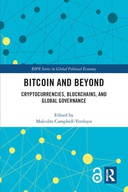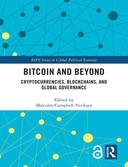Explore
At their essence, blockchains are digital sequences of numbers coded into computer software that permit the secure exchange, recording, and broadcasting of transactions between individual users operating anywhere in the world with Internet access. Like most technological changes, the development of blockchains drew on and combined several existing technologies. Blockchains incorporate digital encryption technologies that mask, to varying degrees, the specific content exchanged as well as the identities of individual users. Algorithms, pre-coded series of step-by-step instructions, are also mobilised in solving complex mathematical equations and arriving at a consensus on the validity of transactions within networks of users. Time-stamping technologies then periodically bundle verified transactions into datasets, or ‘blocks’. Linked together sequentially, these ‘blocks’ form ‘chains’ that make up larger ‘blockchain’ databases of transactions that broadcast a permanent record of transactions whilst maintaining the anonymity of users and specific content exchanged. Blockchains are intended to be maintained by all users in manners meant to be immutable, unless users arrive at a clear consensus to undertake changes.
Why read this book? Have your say.
You must be logged in to comment.
Rights Information
Are you the author or publisher of this work? If so, you can claim it as yours by registering as an Unglue.it rights holder.Downloads
This work has been downloaded 1401 times via unglue.it ebook links.
- 954 - pdf (CC BY-NC-ND) at Unglue.it.
- 254 - pdf (CC BY-NC-ND) at OAPEN Library.
Keywords
- Bitcoin
- Blockchains
- Cryptocurrencies
- Economics, finance, business & management
- Electronic funds transfers
- Financial institutions
- International finance
- KUnlatched
- Political Science
- Politics
Links
web: https://www.routledge.com/Bitcoin-and-Beyond-Open-Access-Cryptocurrencies-Blockchains-and-Global/Campbell-Verduyn/p/book/9780415792141Editions


